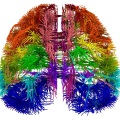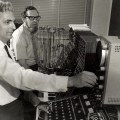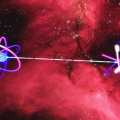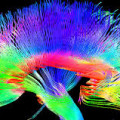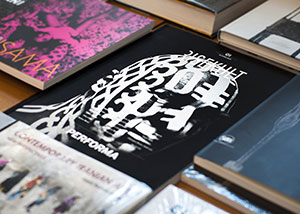In theory, we know what sound waves would look like if we could see them, but it’s not every day we actually get to lay eyes on the effects they produce on the world. There are actually a number of scientific experiments that can be used to produce a practical visual effect in response to sound. Six of these have been used by Wellington, New Zealand-based musician Nigel Stanford, who, along with director Shahir Daud, has put them together to form the music video for “Cymatics”, the single for his newly launched album “Solar Echoes“. The video for “Cymatics” — named for the study of visible sound — represents each audio track with a different visualisation. And, rather than creating the visualisations as a response to the track, it was these visualisations that formed the basis for the track’s composition. The secondary keyboard track uses a Chladni plate, a thin metal plate that vibrates when sound waves run through it, causing looping, undulating patterns to form in sand sprinkled over the surface. Stanford experimented with the keyboard, and chose the four notes he thought produced the best patterns, holding them long enough for the patterns to form — a slow melodic motif. The bass track is represented by a thin dish of water placed on a speaker. The sound booming through the speaker causes the water to ripple and wrinkle in standing waves. Two different frequencies produced interesting patterns, and the liquid used was frozen vodka, which had just enough viscosity to produce effective waves. The drum is visualised using a hose pipe attached to a sub woofer. Although it appears as though the water is twisting into a standing sine wave, this is actually an illusion. The frequency of the wave needs to be the same as the framerate of the camera in order to produce the right visual effect when filmed. For this reason, Stanford settled on 25 Hz. The primary keyboard track was visualised using ferrofluid — microscopic magnetic material suspended in a carrier fluid. This was placed in a long, shallow dish containing magnets activated by the keys. An organ track uses a Rubens’ tube — a tube drilled with holes along one side. Flammable gas is fed into this tube at a controlled rate — much like a Bunsen burner — and the holes are lit, which produces a row of flames. When a constant audio frequency is played into the tube, it creates a standing wave by pushing the gas into patterns. Stanford chose three different tones to produce three different waves. Finally, the tracks all together at the climax of the video are represented using a singing Tesla coil — with Stanford and his stunt double dressed in mesh Faraday suits, which channel the electricity around the outside protecting the wearer within. “In 1999 I watched a documentary on Synesthesia — a disorder that effects the audio and visual functions of the brain. People with the disorder hear a sound when they see bright colours, or see a color when they hear various sounds. I don’t have it (I don’t think), but I have always felt that bass frequencies are red, and treble frequencies are white,” Stanford wrote. “This got me thinking that it would be cool to make a music video where every time a sound plays, you see a corresponding visual element. Many years later, I saw some videos about Cymatics — the science of visualising audio frequencies — and the idea for the video was born.” You can read more about the process of making the video on Stanford’s website — and, of course, view the finished product below.













